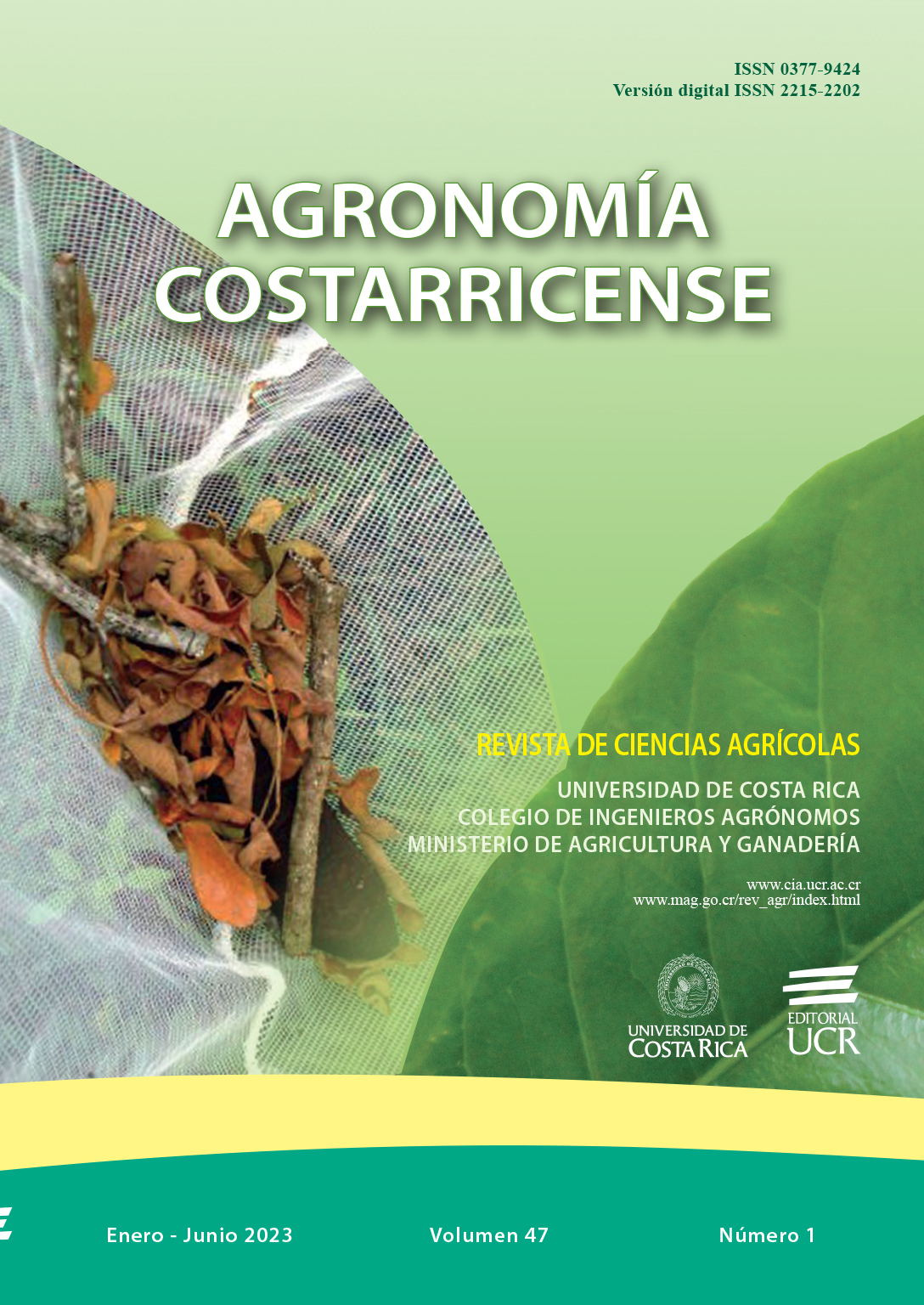Abstract
Introduction. Tomato (Solanum lycopersicum L.) is the most popular vegetable planted in Costa Rica. It is an intensive annual crop developed by small and medium growers. Among the phytosanitary problems that affect the crop are bacteria. In the integrated management, the use of bactericides and antibiotics is common. Objective. Carry out a diagnosis on the use of antibiotic products or other agrochemicals to control bacterial problems in tomato crop. Materials and methods. Information on the use of antibiotics in tomato was collected and ordered. The collaboration of extension agents from the Ministry of Agriculture and Livestock and other organizations were used. Information provided by 39 small and medium producers in different regions was recorded: 15 farmers from the Central Pacific, 10 farmers from the South-Central, 6 farmers from the Brunca, 4 farmers from the Chorotega, 3 farmers from the Western Central and a farmer from the North Huetar. Results. Most growers produce tomatoes in an open field, using plastic semiroofs or greenhouses. Of these growers, 79.5% report having problems caused by bacteria and of these, 71.8% use antibiotics, bactericides or other agrochemicals to control them. A total of 14 products were reported by growers to control bacterial diseases. A clear line in waste management is not reported. Phytopathological problems in tomato productions, mostly caused by bacteria, are common, difficult to eradicate and have a high incidence in plantations, in addition to causing losses and decrease productivity. Conclusion. It is necessary to carry out other research to continue with more analyses regarding the effects of the application of antibiotics, in addition to the development of alternatives that lead to the reduction of the use of antibiotics in tomato accompanied by their responsible and effective management.


